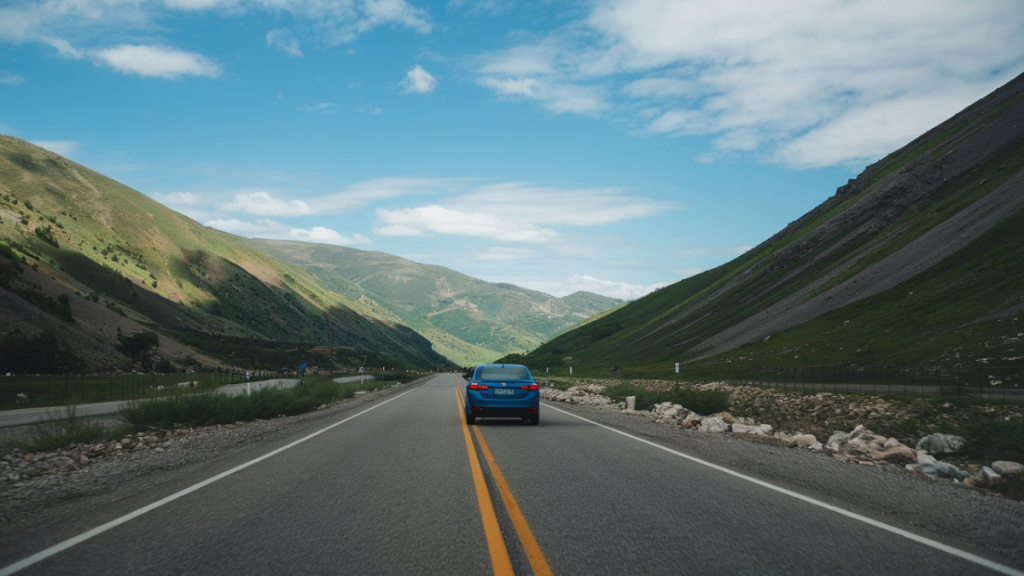Table of Contents
Have you ever wondered if you drive to Alaska? The short answer is yes! If you’re up for an adventure, the drive to Alaska offers some of the most breathtaking views and memorable experiences. But before you hit the road, knowing what to expect is important. From road conditions to must-see stops, we’ve covered you in this guide to help you prepare for an unforgettable journey.
How to Drive to Alaska: The Basics

Driving to Alaska is possible via the Alaska Highway (also known as the Alcan Highway). This road connects the lower 48 states with Alaska, starting in Dawson Creek, British Columbia, Canada, and ending in Delta Junction, Alaska. The journey is long but filled with scenic landscapes, wildlife sightings, and unique pit stops that make the trip worth every mile.
What You Need Before You Start
Before you pack your bags, make sure your vehicle is road trip-ready.
- Passport: A valid passport is required since you’ll pass through Canada.
- Vehicle Check-Up: Ensure your car is in good shape for long-distance driving, including checking the tires, brakes, and oil.
- Emergency Kit: It’s always smart to carry a basic emergency kit with a first aid box, flashlight, extra batteries, and a spare tire.
Is the Drive to Alaska Difficult?

Can you drive to Alaska easily? For the most part, yes. The Alaska Highway is well-maintained, but it’s still important to be aware of a few challenges you might face.
Road Conditions
The Alaska Highway is mostly paved, but depending on the season, there may be some rough patches due to construction or weather. Winter driving can be especially tricky, with icy roads and limited daylight. You’ll find better conditions in the summer, but watch for wildlife crossing the road!
Planning Your Route
There are two main ways to drive to Alaska: the Alaska and Cassiar. The Alaska Highway is the most popular route and offers plenty of services. The Cassiar Highway, on the other hand, is more remote but offers stunning views of British Columbia’s wilderness.
Must-See Stops Along the Way
Your journey to Alaska wouldn’t be complete without stopping at some iconic locations. Here are a few must-see stops that will make your trip even more memorable:
- Liard River Hot Springs (British Columbia): A natural hot spring perfect for soaking after a long day of driving.
- Kluane National Park (Yukon): Stunning mountains and glaciers you won’t miss.
- Tetlin National Wildlife Refuge (Alaska): The ideal spot for bird-watching and exploring Alaska’s natural beauty.
Best Time of Year to Drive to Alaska

The best time to drive to Alaska is during the summer (June to August). The weather is mild during this time, and the long days are perfect for sightseeing. Winter months can be challenging due to harsh weather conditions, but if you’re an adventurous driver who doesn’t mind snow, the scenery during this season is breathtaking.
Summer Driving Perks
- Long Days: With nearly 24 hours of daylight during the summer, you’ll have plenty of time to enjoy the sights and cover more miles.
- Wildlife Viewing: Summer is a great time to see wildlife like bears, moose, and eagles along the road.
- Warmer temperatures: Driving during the summer means avoiding the icy roads and freezing winter temperatures.
Can You Drive to Alaska in Winter?
You can drive to Alaska in winter, but it comes with added risks. Winter roads are often icy, and daylight hours are limited. If you choose to drive in winter, ensure your vehicle is equipped with snow tires, and keep an eye on the weather forecast. It’s also a good idea to carry extra blankets, food, and water if you get stranded.
What to Pack for the Drive
Packing wisely is key for a successful road trip to Alaska.
- Warm Clothing: Even in the summer, temperatures can drop at night, so pack layers.
- Food and Water: Bring snacks and water, especially if driving on the more remote Cassiar Highway.
- Camping Gear: If you plan to camp along the way, ensure you have a sturdy tent and sleeping bags that can withstand cooler temperatures.
Gas Stations and Lodging on the Alaska Highway

One of the biggest concerns for travelers is whether there are enough gas stations and places to stay along the Alaska Highway. Luckily, gas stations are spaced out every 50-100 miles, especially along the more traveled routes. However, services become more sparse the farther north you go, so it’s wise to fill up whenever you can.
Accommodation Options
There are plenty of lodging options, from cozy motels to campgrounds. If you prefer camping, there are numerous campsites where you can enjoy the great outdoors; motels and lodges are available in most towns along the highway for those who prefer a more comfortable night’s sleep.
Crossing the Canadian Border

If you’re driving from the United States, you must cross the Canadian border to reach Alaska. Here’s what you need to know:
- Documents: Bring your passport and vehicle registration.
- COVID-19 Regulations: Check the latest travel restrictions before heading out, as there may be vaccination or testing requirements.
Is It Worth the Drive?
Absolutely! Driving to Alaska is a once-in-a-lifetime experience that allows you to see some of North America’s most remote and beautiful parts. The journey is more than just the destination; it’s about the stunning views, wildlife encounters, and the memories you’ll create.
Also read: Curious if You Can Drive to Alaska? Here’s the truth!
So, can you drive to Alaska? Yes, and it’s an adventure like no other! Whether you’re cruising through lush forests, stopping at hot springs, or spotting wildlife, every part of the journey is unforgettable. Proper preparation allows you to enjoy a safe and rewarding trip to the Last Frontier. Don’t forget your camera—you’ll want to capture every moment of this epic road trip!




